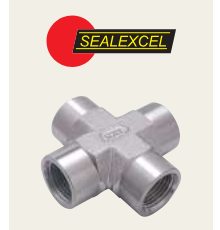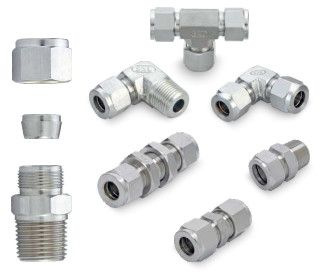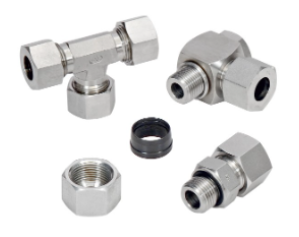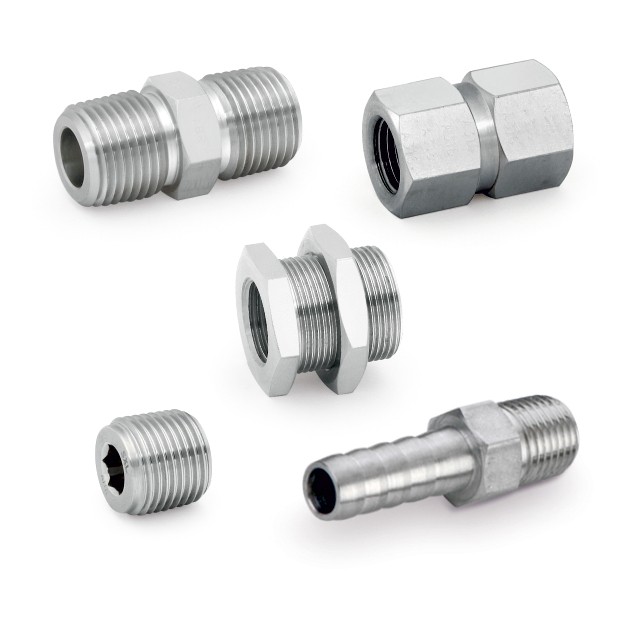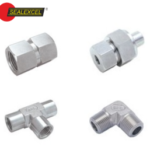
An Introduction to the Types of Pipe Fittings: Cracking the Maze!
January 25, 2024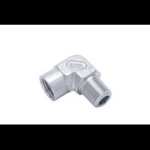
Coupling Pipe Fittings: Safely Link Your Project
June 20, 2024The world of plumbing might seem like a labyrinth of pipes and mysterious connections, but fear not! Understanding the different pipe connection types is the key to tackling any plumbing project with confidence. Whether you’re a seasoned DIYer or a curious homeowner, this guide will equip you with the knowledge to choose the perfect connection for your needs, ensuring a leak-free and long-lasting plumbing system.
Why Pipe Connection Types Matter?
Imagine this: you’ve just finished a beautiful bathroom renovation, complete with a brand new faucet. But then, disaster strikes! A tiny leak emerges from the pipe connection, turning your dream bathroom into a dripping nightmare. This scenario highlights the importance of choosing the right Pipe Connection Types. The wrong connection can not only lead to leaks but also restrict flow, damage pipes, and even cause safety hazards.
However, with the right knowledge, you can become a plumbing pro. Let’s delve into the most common pipe connection types and explore their strengths and weaknesses:
1. Threaded Pipe Connections: The Classics
Threaded pipe connections are the veterans of the plumbing world. Think of them as the tried-and-true method, often used for metal pipes like galvanized steel or brass. Here’s how it works:
- The pipe ends are threaded with a male (raised threads) or female (internal threads) configuration.
- Pipe dope or Teflon tape is applied to the male threads for a watertight seal.
- The male and female ends are screwed together, forming a tight connection.
Pros:
- Simple and familiar for many DIYers.
- Relatively inexpensive.
- Widely available in various sizes.
Cons:
- Requires proper application of pipe dope or Teflon tape to prevent leaks.
- Overtightening can damage threads or crack pipes.
- Not ideal for high-pressure applications.
Applications:
Threaded connections are suitable for low-pressure plumbing systems, such as connecting pipes to sinks, faucets, and valves.
2. Soldering and Brazing: A Permanent Bond
Soldering and brazing create a permanent joint between copper pipes. Here’s the difference:
- Soldering: Uses a lower melting point filler metal and requires a clean, oxide-free pipe surface for a strong bond. Ideal for potable water lines.
- Brazing: Uses a higher melting point filler metal and can withstand higher temperatures, making it suitable for gas lines and hydronic heating systems.
Pros:
- Creates a strong, leak-proof connection.
- Durable and long-lasting.
Cons:
- Requires specialized tools and skills for proper application.
- Not suitable for repairs or modifications, as the joint needs to be cut to disconnect the pipes.
Applications:
Soldering and brazing are ideal for permanent connections in copper pipe systems, particularly for hot water lines and gas lines.
3. Compression Fittings: The Easy Squeeze
Compression fittings offer a convenient and versatile solution for connecting various pipe materials, including copper, PEX (cross-linked polyethylene), and CPVC (chlorinated polyvinyl chloride). They work like this:
- A nut compresses a rubber insert against the pipe, creating a watertight seal.
- The insert conforms to the irregularities of the pipe surface, making it suitable for slightly imperfect connections.
Pros:
- Easy to install, requiring no special tools (just a wrench).
- Reusable and can be disconnected for repairs or modifications.
- Accommodates slight variations in pipe sizes.
Cons:
- Not as strong as soldered or brazed connections.
- May not be suitable for high-pressure or high-temperature applications.
Applications:
Compression fittings are a popular choice for both DIY projects and professional plumbing due to their ease of use and versatility. They’re well-suited for connecting pipes under sinks, for water supply lines to appliances, and for repairs.
4. PEX Connections: The New Age of Plumbing
PEX tubing is a flexible and lightweight plastic piping material that has revolutionized plumbing. PEX connections come in various forms, including:
- Crimp connections: Use a specialized crimp tool to create a secure joint with a metal ring.
- Push-fit connections: Simply push the pipe into the fitting until it clicks, creating a watertight seal.
Pros:
- Fast and easy installation, ideal for DIY enthusiasts.
- Flexible, allowing for easy maneuvering around obstacles.
- Resistant to corrosion and freezing.
Cons:
- Requires specific tools for some connection types.
- Not as aesthetically pleasing as metal pipes for exposed areas.
Applications:
PEX connections are a popular choice for new plumbing installations due to their ease of use and flexibility. They’re Perfect for running water lines behind walls and ceilings, as well as for underfloor heating systems.
5. Flanged Connections: The Heavy-Duty Option
Flanges are primarily used for large-diameter pipes or high-pressure applications. They consist of:
- A circular disc with drilled holes on the pipe ends.
- A gasket sandwiched between the flanges.
- Bolts that tighten the flanges together, creating a secure seal.
Pros:
- Can handle high pressure and heavy loads.
- Make it simple to disassemble for maintenance or repairs.
Cons:
- More complex and time-consuming to install compared to other methods.
- Require more space due to the flange size.
Applications:
Flanged connections are typically used in industrial or commercial plumbing systems for applications like connecting pumps, valves, or boilers.
6. Choosing the Right Connection: It’s All About the Fit
Now that you’ve explored the different pipe connection types, how do you choose the right one for your project? Consider these factors:
- Pipe Material: Different connection methods are best suited for specific pipe materials. For example, soldering works well for copper pipes, while compression fittings can accommodate various materials like PEX and CPVC.
- Application: Consider the pressure and temperature demands of the plumbing system. Threaded connections might suffice for low-pressure situations like a sink faucet, while brazing is necessary for high-pressure gas lines.
- Skill Level: Be honest about your DIY expertise. Choose a connection method that aligns with your comfort level and skill set. Compression fittings or push-fit PEX connections offer ease of use, while soldering or brazing require more specialized skills.
- Accessibility: Think about future maintenance or repairs. Compression fittings and flanged connections offer easier disassembly compared to permanent connections like soldering or brazing.
Beyond Connections: Sealing the Deal
Remember, the perfect connection is only half the battle. Here are some additional tips for a leak-free plumbing system:
- Use the right size pipe and fittings. A loose connection is a recipe for leaks.
- Double-check your connections before applying pressure. A little preventative effort can save you a big headache later.
- Don’t over tighten threaded connections. This can damage threads or crack pipes.
- Use high-quality materials. Invest in durable pipes, fittings, and sealants to ensure long-lasting performance.
By understanding the different pipe connection types and following these tips, you’ll be well on your way to tackling any plumbing project with confidence. Remember, a little knowledge goes a long way in ensuring a leak-free and efficient plumbing system for your home.

